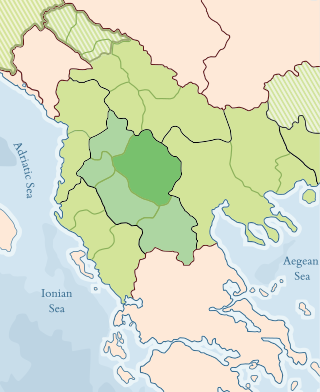Top Qs
Timeline
Chat
Perspective
Sanjak of Monastir
From Wikipedia, the free encyclopedia
Remove ads
The Sanjak of Monastir or Manastir (Turkish: Manastir Sancağı) or Bitola, was a sanjak within the Rumelia Eyalet (1465–1867) and then the Manastir Vilayet (1874–1912). The administrative seat was in Manastir (Bitola).

Sub-districts
1880
The sub-districts, kaza, of the Sanjak of Manastir included (in 1880):[1]
- Bitola
- Florina
- Kičevo
- Prilep
- Ohrid
And the mudurluk of:
- Prespa
- Resen
- Ekşisu
- Mariovo
–1908
The sub-districts, kaza, of the Sanjak of Manastir included (before 1908):[2]
Demographics
Summarize
Perspective
1897
Ethnoconfessional Groups in the Sanjak of Monastir as per the 1881-82 Census[3]
- Bulgar millet (49.8%)
- Muslims (26.7%)
- Rum millet (22.2%)
- Jews (1.30%)
According to Russian consul in the Manastir Vilayet, A. Rostkovski, finishing the statistical article in 1897, the total population of the sanjak was 308,996, with Rostkovski grouping the population into the following groups:[4]
- Bulgarian Exarchists: 151,863
- Greek Patriarchists: 51,749
- Pomaks: 8,251
- Albanian Muslims: 45,259
- Albanian Christians: 723
- Vlachs (Aromanians and Megleno-Romanians): 22,681
- Turks, Ottomans: 24,923
- Jews: 4,270
Ottoman censuses
Ethnoconfessional Groups in the Sanjak of Monastir as per the 1905-1906 Census[3]
- Bulgar millet (47.9%)
- Muslims (26.6%)
- Rum millet (23.9%)
- Jews (1.30%)
- Miscellaneous (0.20%)
According to the 1881–1882 and the 1905–1906 census of the Ottoman Empire, the population of the Sanjak of Manastir is distributed, as follows:[3]
Remove ads
References
Wikiwand - on
Seamless Wikipedia browsing. On steroids.
Remove ads
